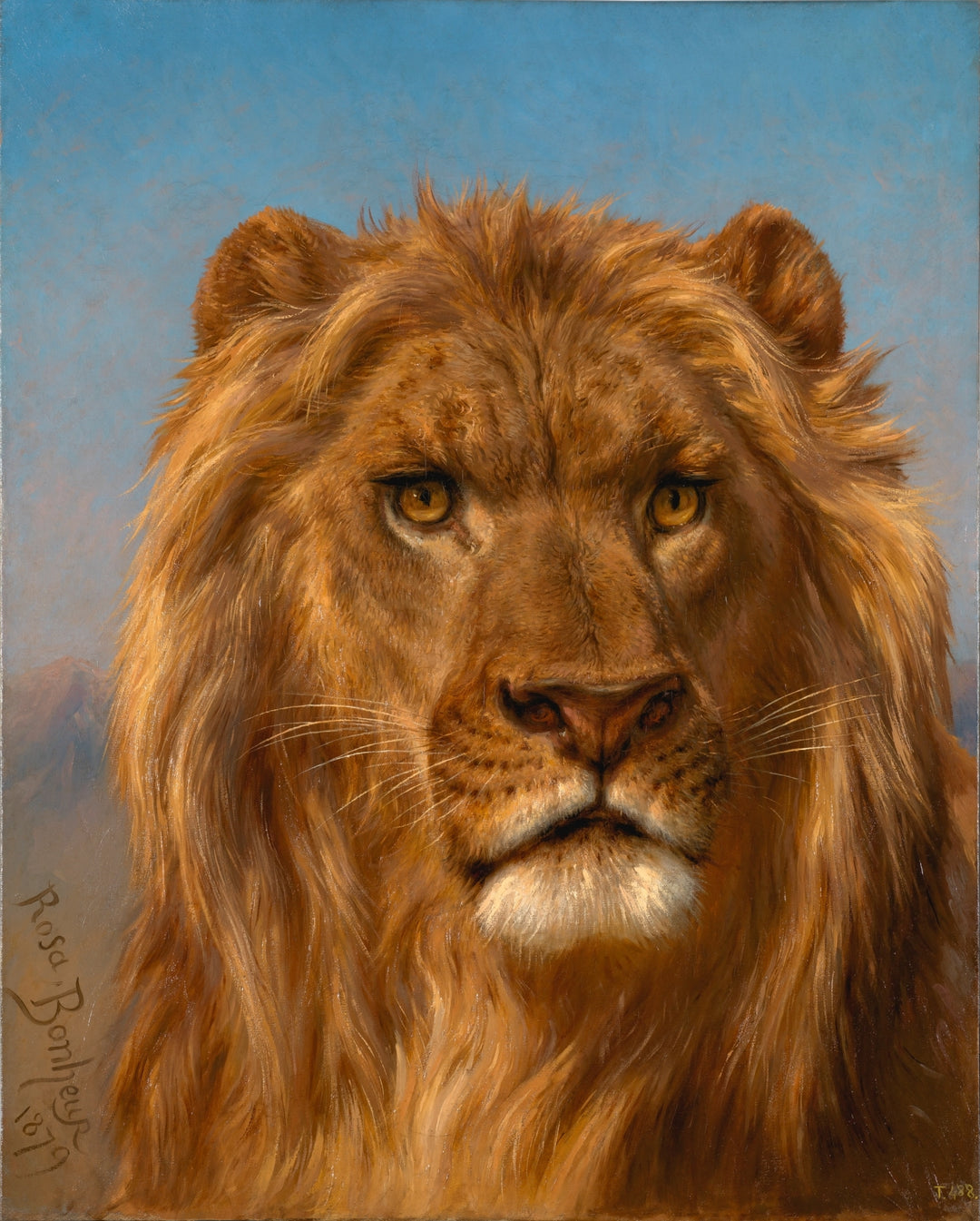
El Cid - Rosa Bonheur
| Author: | Rosa Bonheur |
|---|---|
| Title: | The Cid |
| Original location: | Prado Museum, Madrid, Spain |
| Year: | 1879 |
Rosa Bonheur, the undisputed master of animal realism, found in nature an inexhaustible source of artistic expression. El Cid (1879), displayed at the Prado Museum, is a portrait of power and dignity that transcends mere zoological representation to become a symbol of restrained strength. The lion’s gaze, fixed and penetrating, is not just that of a predator, but that of a being endowed with consciousness, almost human in its serenity and determination.
The meticulous texture of the fur, with each strand of its mane illuminated by light, reflects Bonheur’s technical mastery in animal painting, a skill she developed through direct observation in wildlife reserves. While in romanticism animals were seen as metaphors for the wild and untamable, Bonheur’s approach in realism elevates them to autonomous subjects, far removed from allegorical symbolism and presented with the dignity of a formal portrait.
The work anticipates the interest in ethology, the science of animal behavior, by portraying the lion not only as a majestic being but also as an entity with its own psychology. In contrast to the heroic lions of classical sculpture and the academic school, or those depicted in medieval manuscripts as symbols of royalty, this painting brings us back to the reality of the animal in its purest state, without embellishment or exaggeration.
Bonheur, who defied the artistic conventions of her time, turned her mastery of animal portraiture into an act of reclaiming nature in the face of industrial progress. Her influence would extend beyond the 19th century, inspiring generations of artists who explored the relationship between humans and wildlife, from the naturalism of Bruno Liljefors to contemporary hyperrealism. In this artwork, the pictorial tradition of aristocratic portraiture is transformed into an ode to the animal kingdom, where nobility is no longer measured by lineage, but by the depth of a gaze immortalized on canvas.